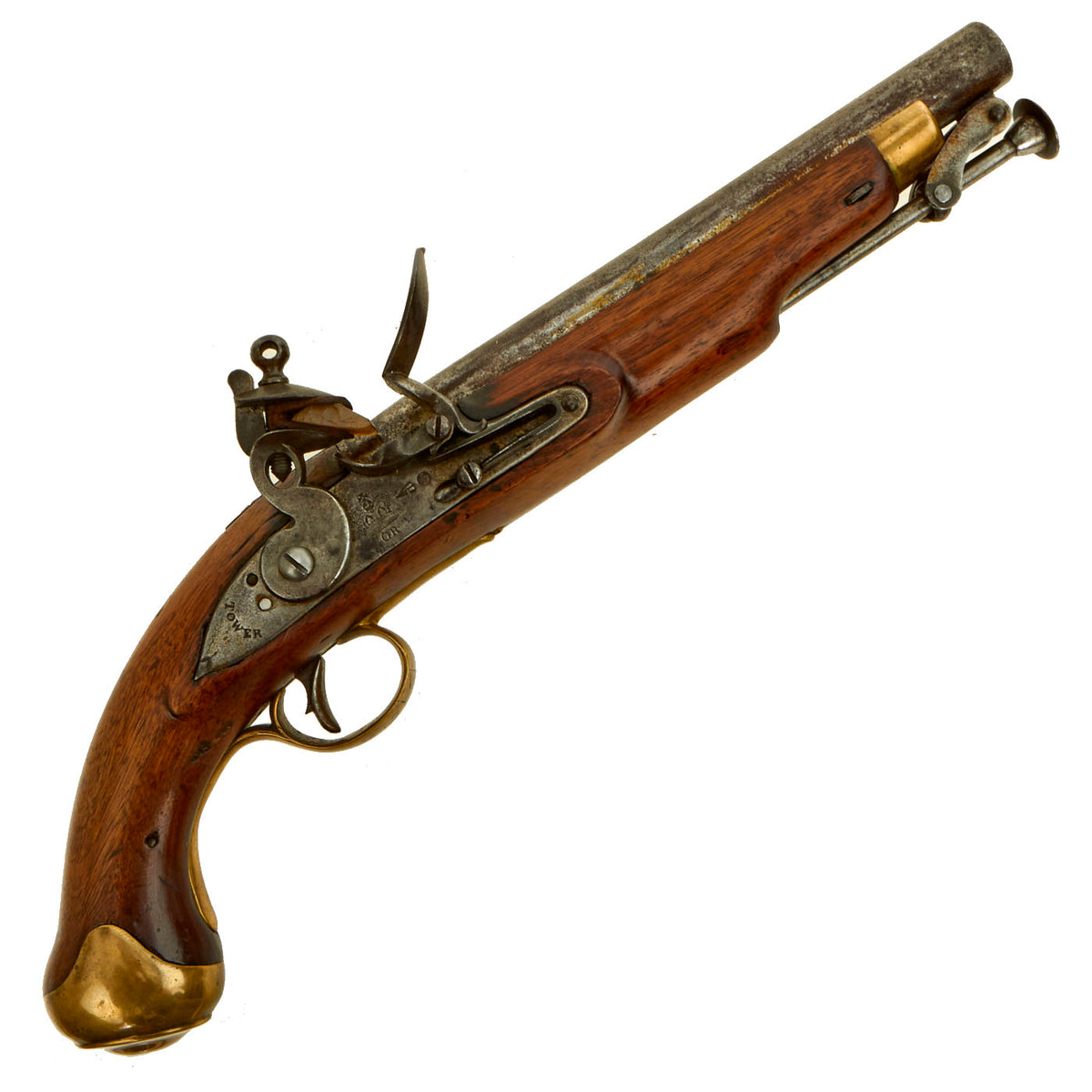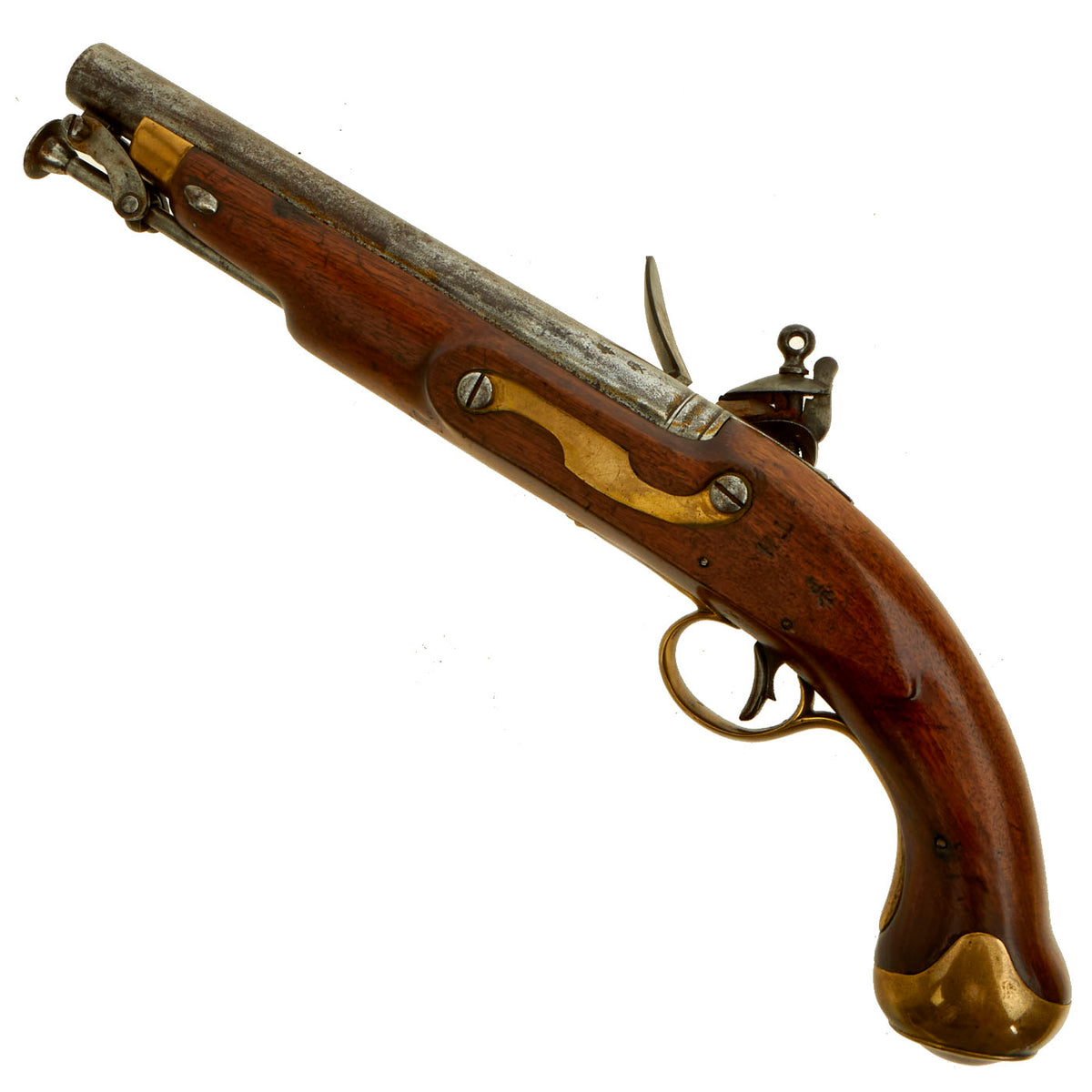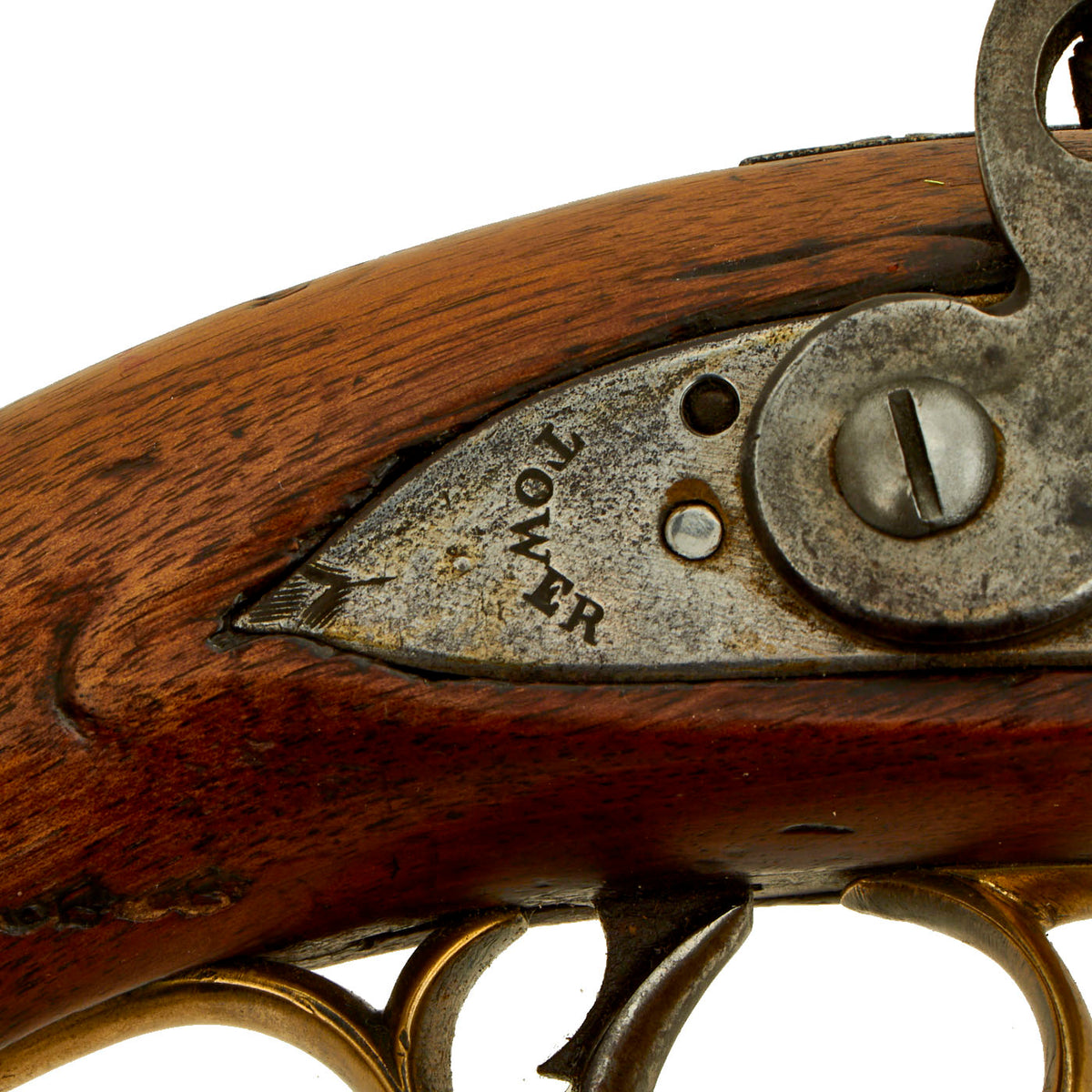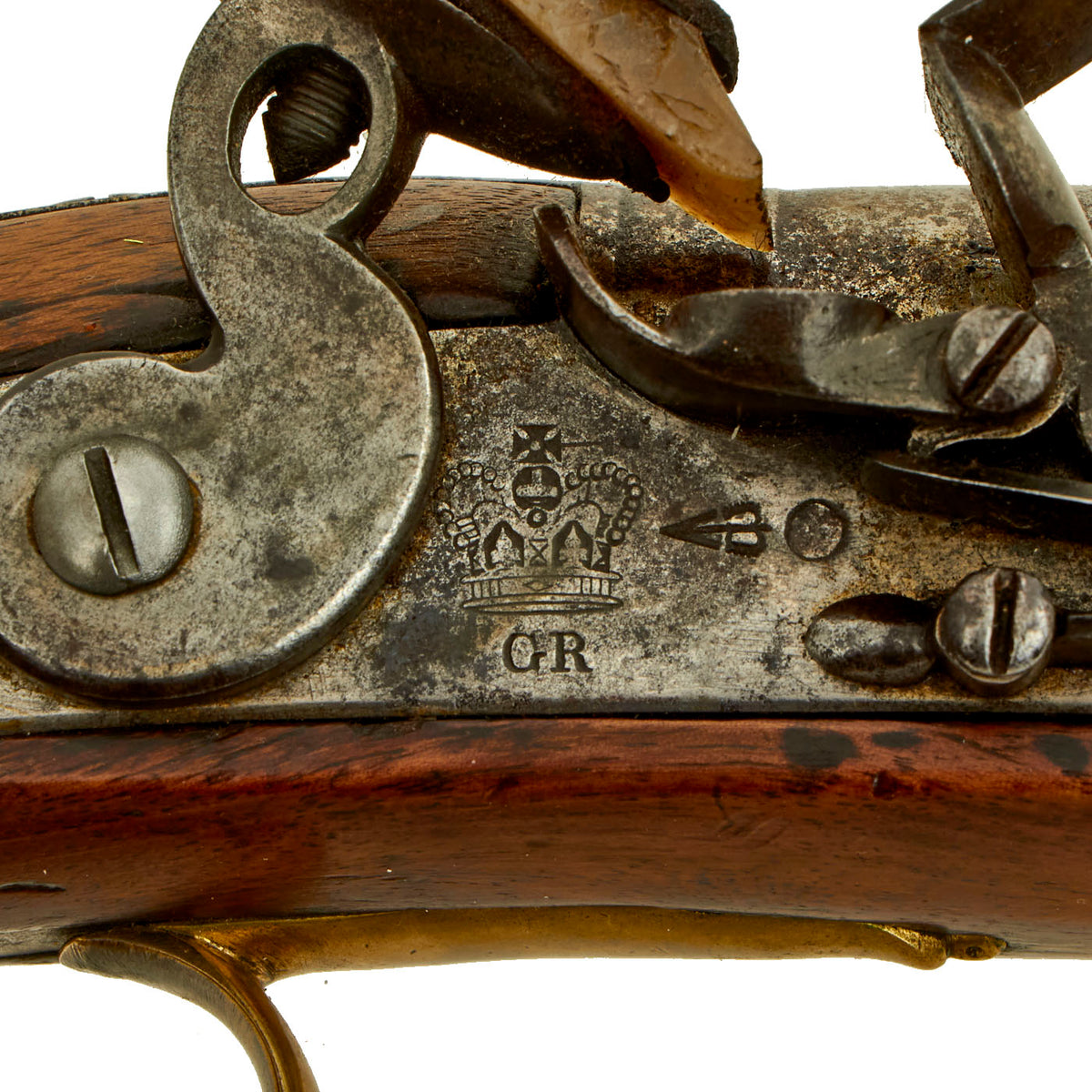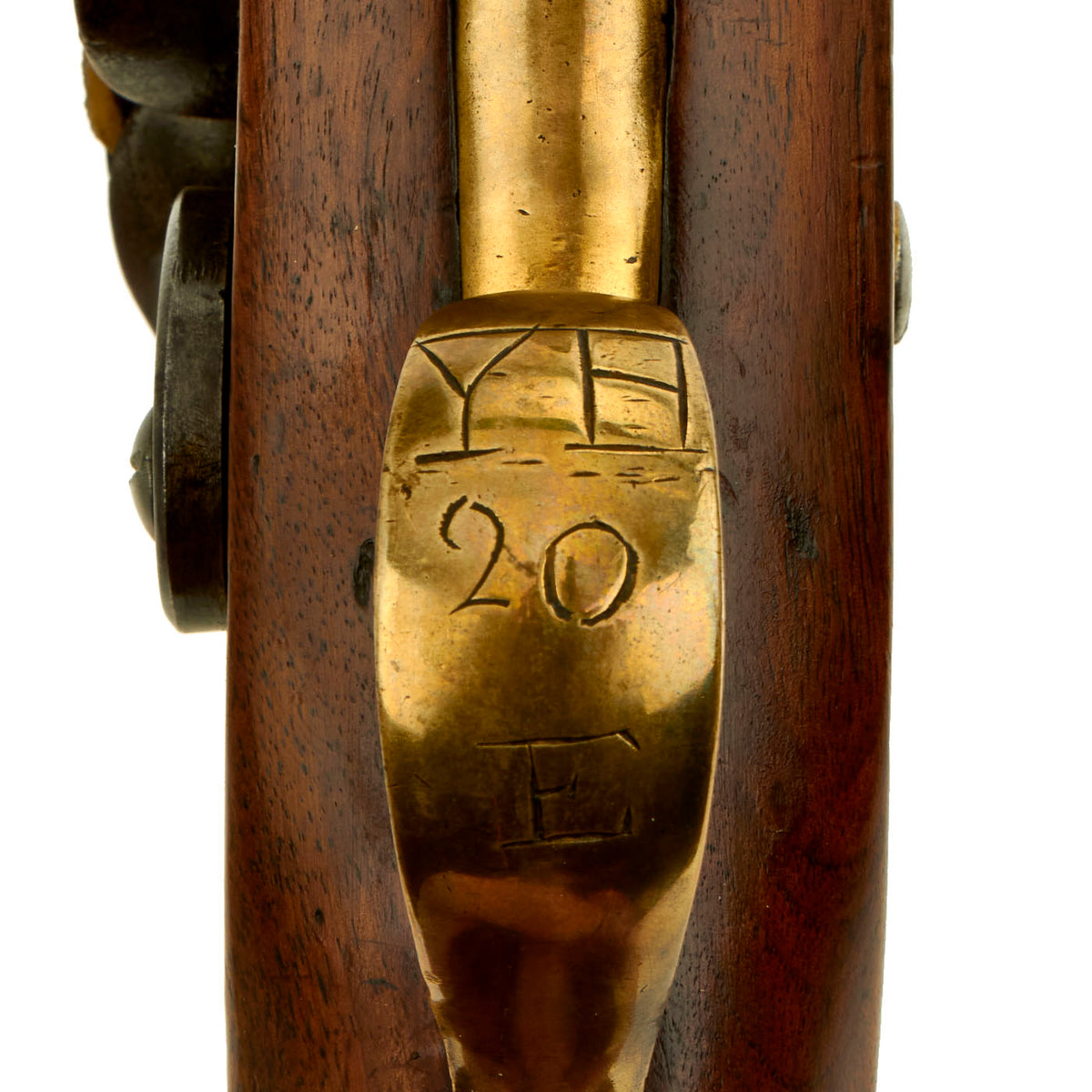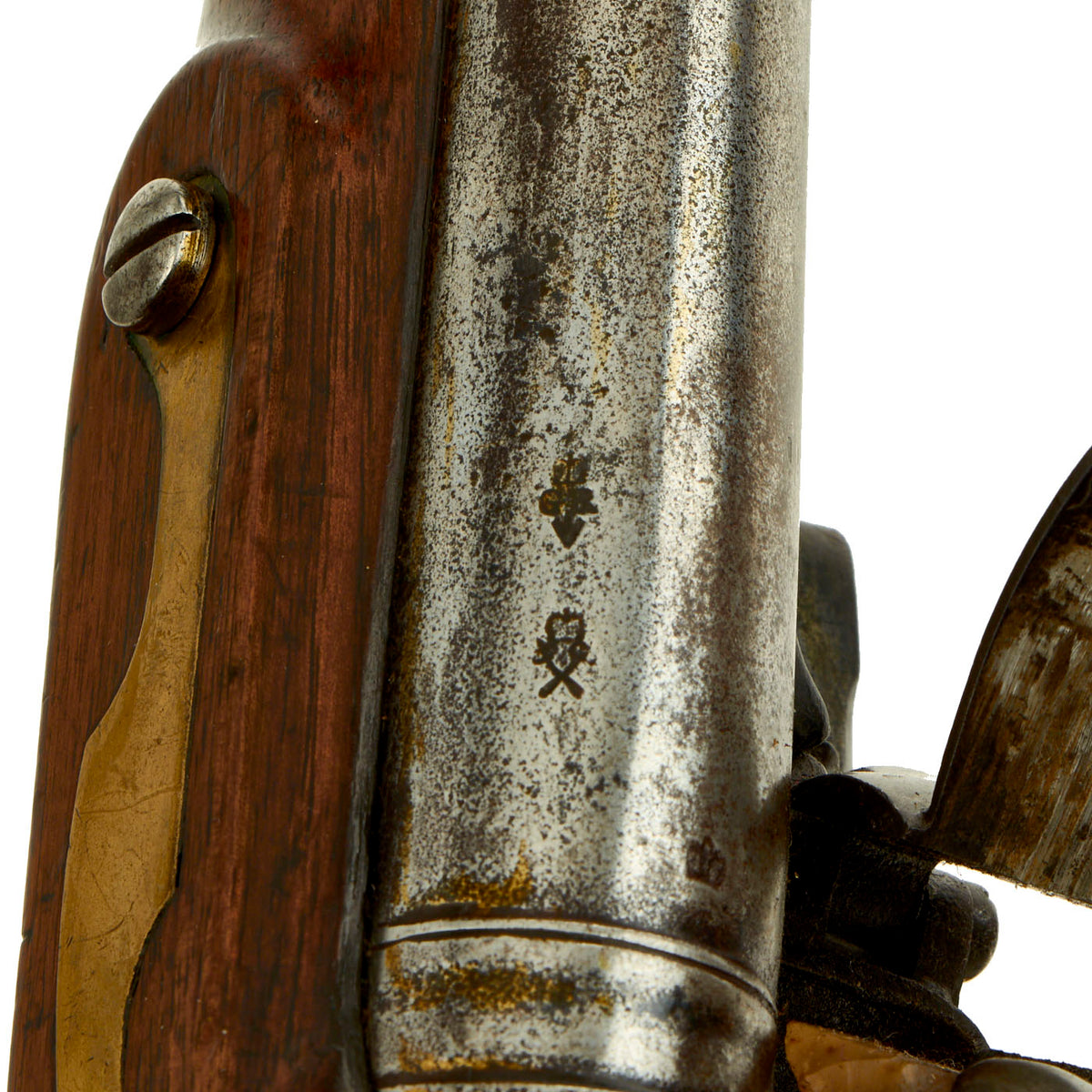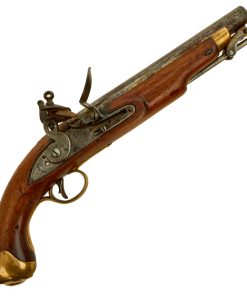Original British Napoleonic Tower Flintlock New Land Pattern Dragoon Pistol marked to Yorkshire Hussars Yeomanry – dated 1806 Original Items
$ 1.795,00 $ 448,75
Original Item: Only One Available. This is the regulation British Dragoon Pistol in use during the Napoleonic Wars and after, known as the NEW LAND Pattern. It includes a “trapped” swivel ramrod of all steel allowing the Cavalryman to reload whilst on horseback without fear of dropping his ram rod. It comes with a standard 9″ barrel in .67 caliber smooth bore, and has all brass mounts of butt cap, trigger guard, side plate, and nose cap.
In fine tight and all original condition showing British Proof marks. It is fitted with the standard 9″ .67″ smooth bore barrel, which still shows visible proofs on the breech end, a rare thing to see. There is also a CROWNED BROAD ARROW over what looks to be an 1806 date on the right side of the stock just over the lock plate. The lock itself is marked with Crown over G.R. and TOWER on the lock plate tail, with the CROWN / BROAD ARROW “Lock Viewer’s” mark under the pan. From what we can see, they are the CROWN / GR royal proof and the CROWN / CROSSED SCEPTERS proof for manufacture in Birmingham, England by Ketland, which in 1813 became the proof mark for all of Birmingham produced guns.
It also is marked on the trigger guard Y H / 20 / E, which would indicate it was issued during the early 19th Century period to the Yorkshire Hussars Yeomanry volunteer cavalry. After Britain was drawn into the French Revolutionary Wars, Prime Minister William Pitt the Younger proposed on 14 March 1794 that the counties should form a force of Volunteer Yeoman Cavalry (Yeomanry) that could be called on by the King to defend the country against invasion or by the Lord Lieutenant to subdue any civil disorder within the county. Two regiments were raised in Yorkshire, England, one meeting at West Riding and a second meeting at Doncaster. The units were then partly dismantled at the end of the French Revolutionary wars. However, the Peace of Amiens was short lived, and the threat of revolution was quickly supplanted by the threat of invasion by Napoleon Bonaparte leading to continual war up until 1815.
The Yeomanry once again declined in importance and strength after the end of the French wars, but the regiments continued in industrial Yorkshire. The Northern Regiment of West Riding Yeomanry was redesignated the Yorkshire Hussar Regiment of Yeomanry Cavalry on 11 January 1819. This pistol was probably issued and marked to the regiment sometime thereafter, which means it may have been issued to a frontline unit during the war. Unfortunately there really is no way to account for its entire service history.
Overall condition is very nice, with the expected wear from age and use. The stock has a standard brass nose cap and all brass fittings. The lock functions well, holding at half cock and firing at full. The captured ramrod works as well. The stock is in good condition, with a lovely color and no damage or repairs that we can see. There are even still visible proof marks in the ramrod channel.
A nice honest, tight example from the Napoleonic Era, marked to a Volunteer Cavalry Unit. Ready to research and display!
Specifications:
Year of Manufacture: circa 1805
Bore Diameter: .67″
Ammunition Type: Lead Ball & Powder
Barrel Length: 9 inches
Overall Length: 15 inches
Action: Flintlock Side Action
Feed System: Muzzle-Loaded
NOTE: International orders of antique firearms MUST be shipped using UPS WW Services (courier). USPS Priority Mail international will not accept these. International customers should always consult their country’s antique gun laws prior to ordering.
Fast Shipping with Professional Packaging
Thanks to our longstanding association with UPS FedEx DHL, and other major international carriers, we are able to provide a range of shipping options. Our warehouse staff is expertly trained and will wrap your products according to our exact and precise specifications. Prior to shipping, your goods will be thoroughly examined and securely secured. We ship to thousands clients each day across multiple countries. This shows how we're dedicated to be the largest retailer on the internet. Warehouses and distribution centres can be located throughout Europe as well as the USA.
Note: Orders with more than one item will be assigned a processing date depending on the item.
Before shipping before shipping, we'll conduct a thorough inspection of the items you have ordered. Today, the majority of orders will be delivered within 48 hours. The delivery time will be between 3-7 days.
Returns
The stock is dynamic and we cannot completely manage it because multiple stakeholders are involved, including our factory and warehouse. So the actual stock may alter at any time. It's possible that you may not receive your order once the order has been made.
Our policy is valid for a period of 30 days. If you don't receive the product within 30 days, we are not able to issue a refund or an exchange.
You can only return an item if it is unused and in the same state as the day you received it. You must have the item in its original packaging.
Related products
Uncategorized
Armored Burgonet Helmet & Polearm from Scottish Castle Leith Hall Circa 1700 Original Items
Uncategorized
Australian WWII Owen MK1 Machine Carbine SMG Custom Fabricated Replica with Sling Original Items
Uncategorized
Uncategorized
Uncategorized
Uncategorized
Uncategorized
Uncategorized
Uncategorized
Armoured Fighting Vehicles of the World: AFVs of World War One (Hardcover Book) New Made Items
Uncategorized
Uncategorized
Uncategorized
Band of Brothers ORIGINAL GERMAN WWII Le. F.H. 18 10.5cm ARTILLERY PIECE Original Items
Uncategorized
Uncategorized
Uncategorized
Uncategorized
Angolan Rebel 1970s era 60mm Inert Display Mortar from Angolan Civil War Original Items
Uncategorized
